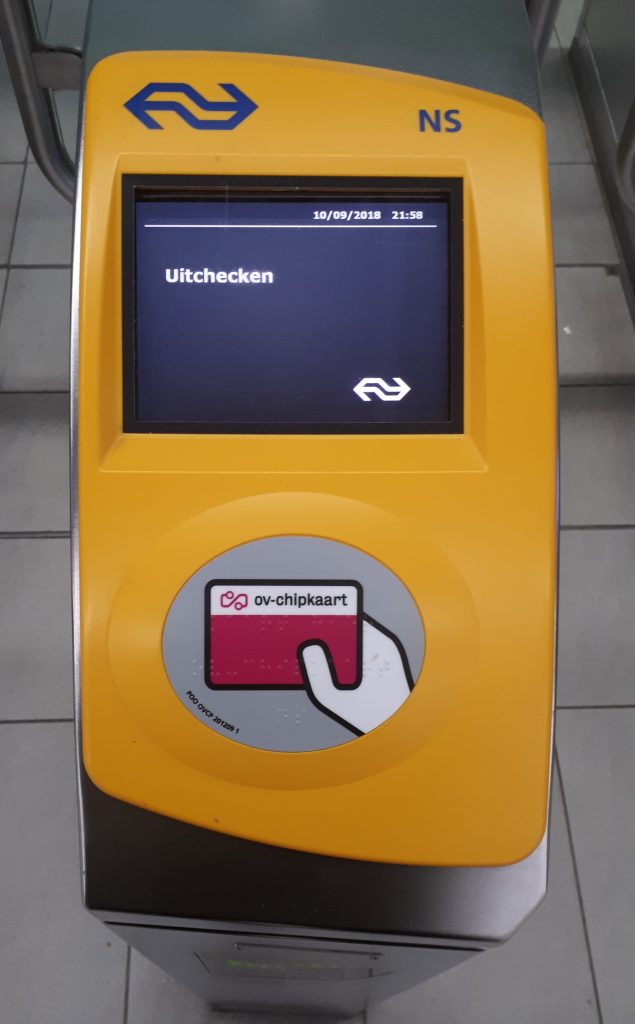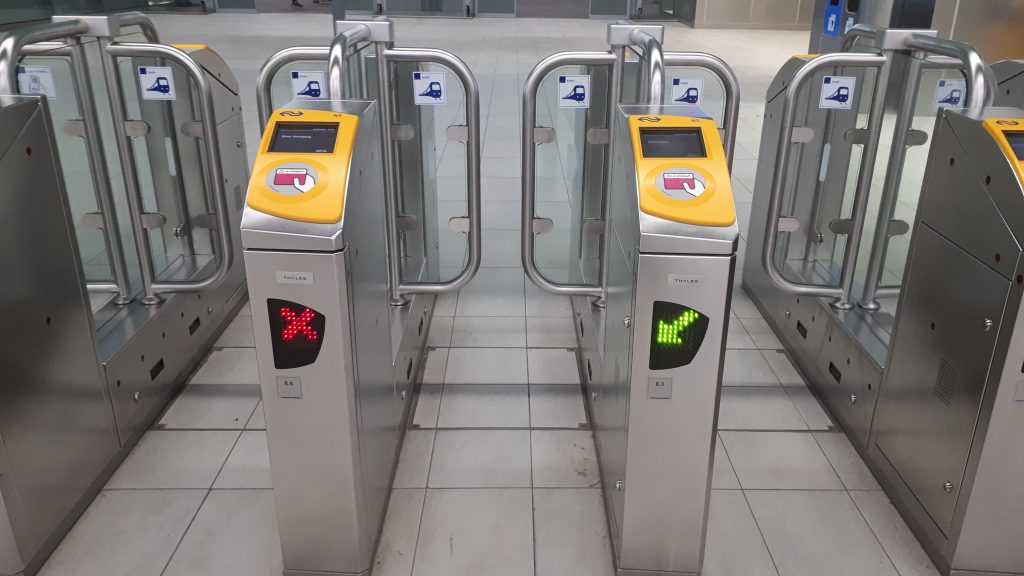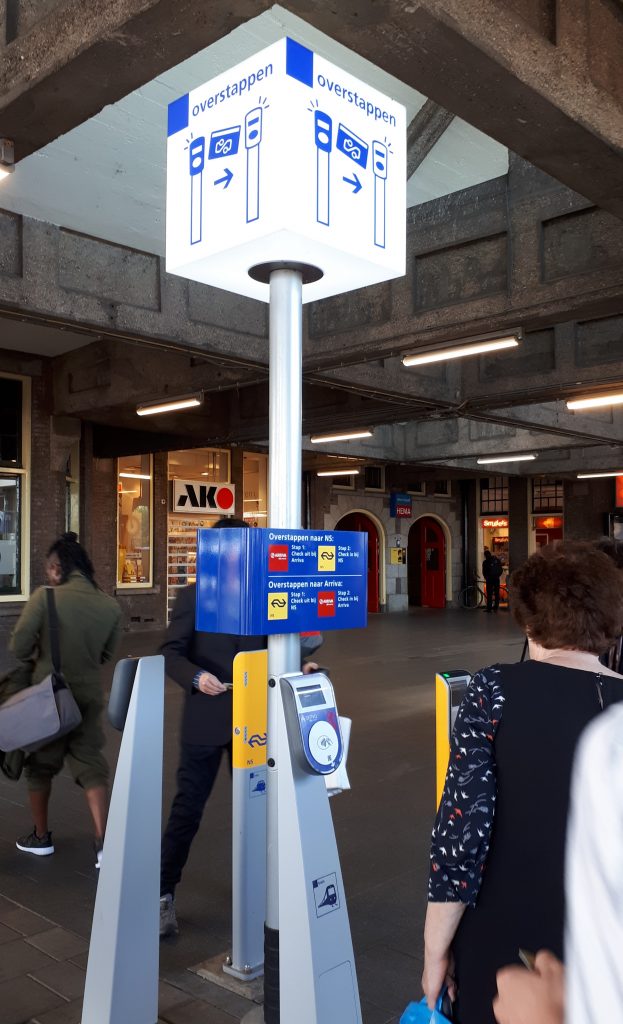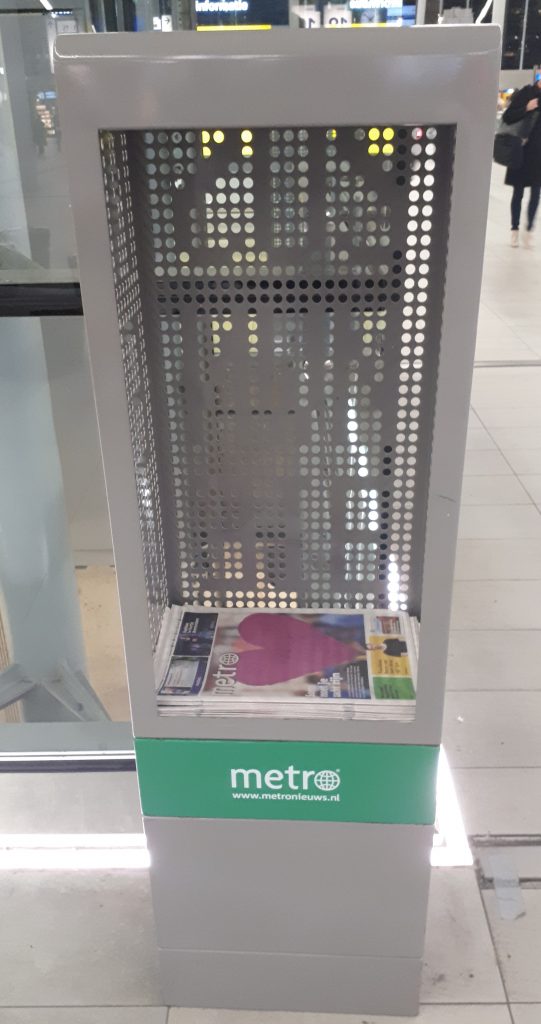What You MUST Know About Dutch Train Stations (pt. 2) Posted by Sten on Sep 17, 2018 in Culture, Dutch Vocabulary
Last week, we looked at everything you need to know about Dutch train stations. Since there was so much to know, I decided to break it up in two parts, to make it easier digestible. Today, we will look a bit more at tickets and the infamous OV-chipkaart.
In- en uitchecken
The OV-chipkaart… We need to briefly talk about that. Since quite some time, the Dutch have a system in place that requires you to scan a card at poles, increasingly at little poorten (gates) that are the only way to even get to the sporen. You can opladen (charge) this card at oplaadpunten (charging points), where credit cards are accepted as well at no additional charge.
However, you need to buy the card first, which costs € 7,50 at least – and that is just the card.
You can also simply buy a ticket in a lot of stations, but if you stay for a few weeks or longer and you travel frequently, an OV-chipkaart is probably a good idea. The convenience is that you can use the OV-chipkaart in pretty much any openbaar vervoer, even on the veerboten (ferries) in Amsterdam.
What you will often hear in the train when entering a station is: Reist u met de OV-chipkaart? Vergeet dan niet uit te checken (Are you travelling with the OV chip card? Then please do not forget to check out). With these poorten, you cannot really forget, because there is no other way for the damn poort to open other than by checking out (as you can see – I am not a fan of the poorten, because they can block passage through a train station to the other side of the tracks). In other cases, forgetting will cost you! At some point, the system will check you out. However, since it does not know where you entered the train, it assumes you traveled the farthest distance, which costs about €26,-. So, yes, it can suck to forget, but it does not cost you that much.
A great source of cheap tickets, though only payable with a Dutch bank account, is spoordeelwinkel.nl. Otherwise, you can always be on the lookout for cheap train ticket campaigns at Hema, Blokker or Albert Heijn, which are usually about €15,- for a dalvrij ticket (meaning only in hours outside the peak). But I digress!
Overstappalen
What you will find at any station that services multiple vervoerders are overstappalen (transfer poles). These are just points where you can uitchecken (check out) from one vervoerder (e.g. NS) and inchecken (check in) to another (e.g. Arriva). This is required if your connection is serviced by a different vervoerder, so check beforehand. Simple rule of thumb: Yellow train? NS (yellow/navy poles). Blue? Blauwnet or Arriva (blue/white poles). Purple? Veolia (purple/white poles). I have never seen a station that services more than two vervoerders, so overstappen (transferring) is a pretty simple process.
Metro
Puh! So much information and so much to think about! Time to relax a little. And why not with a free krant (newspaper)? Just take a copy of Metro, a daily krant that can be found at almost any station, fresh everyday to read in the train to stay up to date with what’s happening in the country – and a great way to sharpen your Dutch skills!
Any questions, or things I forget or things you wondered about at Dutch train stations? Let me know in the comments below!

Build vocabulary, practice pronunciation, and more with Transparent Language Online. Available anytime, anywhere, on any device.








Comments:
Roger Green:
I spent a couple of weeks in July travelling between Leiden, Deventer, Amersfoort and Baarn and on one occasion at Baarn, couldn’t see a gate so I left the station without checking out. As an occasional visitor to the Netherlands I was not entirely familiar with the system so, when I tried to use the OV card next time I was shocked to learn that my credit was exhausted and I had to pay another €20 … I had paid €20 the day before and only travelled from Amersfoort to Baarn. The OV card system is unique to the Netherlands and whilst it may be an easy system for Dutch people who are familiar with it takes time for tourists to understand it.
Jeanne Kasten:
Also you have to keep a minimum balance on it to use the trains, at least 20 euros. For buses and trams the balance doesn’t have to be so high.
shak:
Yes, for buses as long as you have more than 0 euro, you can travel, even getting minus at the end.
What I don’t understand is why so many things can be paid only with Dutch bank account.
Anyway, what would be the cheapest way to travel Eind-Venlo? One way train is for 9 euro, quite a lot.